

Academician V.A.Rubakov
celebrates his 50th birthday
Academician V.A.Rubakov is a famous physicist-theorist, one of the world leading specialists in the field of quantum field theory, elementary particle physics and cosmology, a Full Member of the Russian Academy of Sciences. He is undoubtedly one of the greatest scientists of Russia.
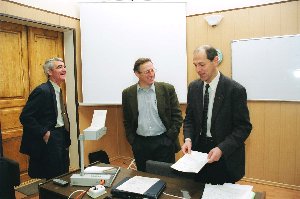
V.A.Rubakov is an author of more than 160 scientific works. Many of them made a fundamental contribution into the theory of the early Universe, nonperturbative quantum field theory, theory of the Universe baryon asymmetry origin, quantum gravitation. His scientific style combines both deep penetration into the essence of physical phenomena which makes it possible to understand and explain them and thorough quantitative analysis of the most important pnenomenological effects. Thus already in his first famous work on proton decay monopole catalysis (1981) he theoretically predicted a qualitative physical effect (decay of baryon matter!) and made a thorough quantitative conclusion about the possibility and ways how it can be tested experimentally.
V.A.Rubakov was one of the first scientists who began to develop the up-to-date inflation theory and realized that investigation of the Universe and its evolution can give us unique information about physics of high energy particles which are still not detectable by a direct experiment. This connection was well illustrated in his article on gravitation waves production (1982, with co-authors ), some works were dedicated to electroweak non-conservation of fermion numbers. In one of the most famous papers (1985, in cooperation with V.A. Kuzmin and M.E. Shaposhnikov) he showed that anomalous processes with a change of baryon and lepton numbers occur extremely fast in the early Universe. This discovery became a basis for electroweak baryogenesis and leptogenesis which help to explain the observable baryon asymmetry of the Universe.
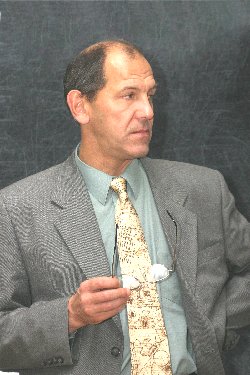
A series of works by V.A.Rubakov of the 70-80ths were devoted to quantum gravitation, in particular, in collaboration with P.G. Tinyakov and G.V. Lavrelashvili he investigated the loss of quantum coherence when the topology of manifolds is changed, for example, when new small universes arise and split off ours. The loss of coherence can influence upon the intensity of transitions of ordinary particles into each other, and therefore there is a hope to verify a hypothesis about forming daughter's Universes. In many his works (1980-2000, with joint authors) V.A.Rubakov studied nonperturbative (instanton) contributions to the scattering cross-section of high energy particles. The simplest perturbative calculations showed a factorial increase in multibody production cross-section during high-energy particles collisions. Besides, by analogy with the processes at high temperatures an exponential suppression was expected to disappear for the processes with violation of baryon and lepton numbers ( in collisions of particles with energies exceeding the energy of an electroweak sphaleron). The advanced quasi-classical approach confirmed the fact of exponential suppression of multibody production cross-section at high temperatures, in particular, revealed an exponential suppression of the processes with non-conservation of a baryon number in collisions of particles with energies which are realistic for experiments in the near future.
One of the most serious problems on the boundary of elementary particle physics, astrophysics and cosmology is the absence of a cosmic rays spectrum cutting at superhigh energies. To explain this phenomenon V.A.Rubakov and V.A. Kuzmin in 1997 put forward a model of the dark matter made of superheavy unstable particles which decay to ordinary particles of the Standard Model due to nonperturbative effects providing life-time of superheavy particles of the order of the Universe life. This hypothesis can already be experimentally tested in the nearest future.

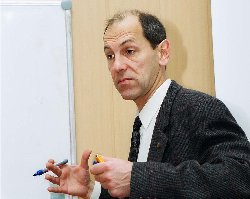
As far back as the early 80ths V.A.Rubakov and M.E. Shaposhnikov proposed a conception of a multidimensional world implying additional infinite spatial dimensions which can only be observed at high energies. At low energies interaction proceeds in a such way that the observed particles can only move in the three-dimensional subvariety, this explains the seeming three-dimensionality of our world. After some models of gravitation based on a three-dimensional variety (the end of the 90ths) had been formed the conception gained wide acceptance. It was developed in the latest works by V.A.Rubakov where he studied gravitation modifications at large and small distances, considered the problems of conservation of unitarity, mass and electric charge as well as possible cosmological displays of the models with additional spatial dimensions.
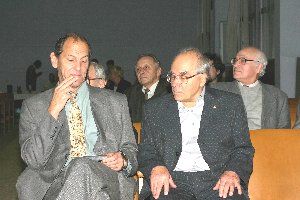
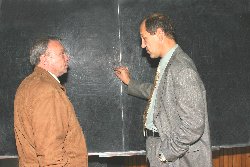
For fruitful scientific activity V.A.Rubakov was awarded Fridman Prize of the Russian Academy of Sciences in 1999 (shared with V.A. Kuzmin) and Pomeranchuk International Prize in 2003.
His kindness, honesty and adherence to principles attract people and help to make a friendly and creative atmosphere for work.
Collaborators and friends heartily congratulate
V.A.Rubakov
and wish him good health, happiness and success!
WWW.INR.RU 2001 © webmasters